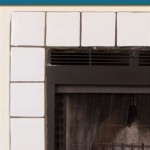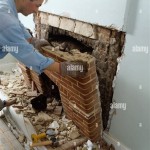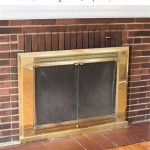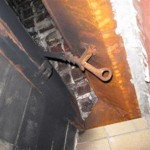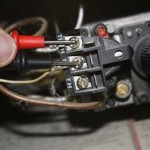Instead, use an open-ended closing statement to encourage further exploration.
Replacing a Brick Fireplace with Stone: A Comprehensive Guide
The fireplace, traditionally the heart of the home, often serves as a focal point for design and ambiance. While brick fireplaces have a classic appeal, homeowners may opt for a change, frequently seeking to replace them with natural or manufactured stone. This transition can dramatically alter the aesthetic of a room, adding a touch of rustic elegance or contemporary sophistication. The process of replacing a brick fireplace with stone involves several considerations, from structural integrity and material selection to installation techniques and cost factors. This article will explore the key aspects of this home remodeling project.
Structural Considerations and Preparation
Before embarking on a stone fireplace conversion, a thorough assessment of the existing brick fireplace and its surrounding structure is essential. The existing fireplace must be evaluated for structural soundness. Cracks, crumbling mortar, or signs of water damage can compromise the stability of the fireplace and need to be addressed before any further work commences. A qualified structural engineer or experienced mason can conduct this assessment and provide recommendations for necessary repairs or reinforcements.
The weight of the new stone is a critical factor. Stone is typically heavier than brick, and the existing fireplace foundation and floor must be able to support the added load. If the foundation is inadequate, it will need to be reinforced or even rebuilt to prevent settling or structural failure. This often involves adding concrete footings or reinforcing the existing floor joists. Local building codes dictate the specific requirements for fireplace foundations and load-bearing capacity, and adherence to these codes is mandatory.
Preparation involves removing the existing brick facing. This process requires careful demolition to avoid damaging the surrounding walls and floors. Protective coverings should be used to shield furniture and other valuables from dust and debris. Depending on the extent of the conversion, it may also be necessary to remove the firebox, hearth, and mantel. A licensed contractor can ensure that the removal is done safely and efficiently, following proper disposal procedures for demolition materials.
Once the brick is removed, the underlying surface needs to be prepared to receive the stone. This typically involves applying a scratch coat of mortar or a suitable bonding agent to create a rough surface that the stone can adhere to. Metal lath, a wire mesh, is often applied to the scratch coat to provide additional support and prevent the stone from separating from the wall over time. The lath is secured to the wall studs with nails or screws, ensuring a solid base for the stone installation.
Stone Selection and Design
Choosing the right type of stone is crucial for achieving the desired aesthetic and ensuring the longevity of the fireplace. Natural stone options include granite, marble, limestone, slate, and river rock, each with its own unique texture, color, and pattern. Manufactured stone, also known as cultured stone, is a concrete-based product designed to replicate the look of natural stone. It offers a wider range of colors and styles and is generally lighter and less expensive than natural stone.
The design of the stone fireplace should complement the overall style of the room. A rustic design might incorporate stacked stone with irregular shapes and textures, while a contemporary design might feature smooth, linear stone with clean lines. The color of the stone should also be carefully considered, as it can significantly impact the mood and atmosphere of the room. Lighter colors can make a room feel brighter and more spacious, while darker colors can create a cozier and more intimate setting.
The size and shape of the stone pieces will also influence the final appearance of the fireplace. Larger stones can create a more dramatic and imposing look, while smaller stones can add a more subtle and intricate detail. The layout of the stone, whether it is stacked horizontally, vertically, or in a random pattern, will further define the style of the fireplace. Homeowners should work with a designer or contractor to create a detailed plan that outlines the specific types of stone, layouts, and dimensions.
The hearth, the area directly in front of the fireplace, is an integral part of the design. It serves both a functional purpose, protecting the flooring from sparks and embers, and an aesthetic purpose, providing a visual transition between the fireplace and the room. The hearth can be made of the same stone as the fireplace or a contrasting material, such as granite, marble, or slate. Its size and shape should be proportionate to the fireplace and the room, and it should comply with local building codes regarding fire safety.
Installation Techniques and Best Practices
Installing a stone fireplace requires specialized skills and knowledge. Proper installation is essential for ensuring the safety and longevity of the fireplace. A qualified mason or contractor with experience in stone installation should be hired to perform the work. The installation process typically involves several steps, starting with the application of a mortar bed to the prepared surface. The mortar bed provides a level surface for the stone and helps to bond it to the wall.
Each stone is carefully placed onto the mortar bed, ensuring that it is level and aligned with the surrounding stones. Spacers are often used to maintain consistent grout lines between the stones. The stone is tapped into place with a rubber mallet to ensure a secure bond. Excess mortar is wiped away to prevent it from drying on the surface of the stone. The installation process is repeated until the entire fireplace is covered in stone.
Grouting is the process of filling the spaces between the stones with mortar. The grout lines can be flush with the surface of the stone or recessed, depending on the desired aesthetic. The color of the grout should complement the color of the stone. After the grout has dried, it is cleaned with a damp sponge to remove any excess mortar. The surface of the stone is then sealed with a sealant to protect it from dirt and moisture.
Proper ventilation is crucial for a functioning fireplace. The chimney must be inspected to ensure that it is free of obstructions and in good working order. A chimney sweep can clean the chimney and inspect it for cracks or other damage. A damper should be installed to regulate the airflow and prevent drafts when the fireplace is not in use. The size of the firebox should be appropriate for the size of the room, and it should be lined with firebrick to protect the surrounding structure from heat. Additionally, proper clearances from combustible materials must be maintained according to local building codes to minimize the risk of fire.
The installation process should be closely supervised to ensure that it is done correctly and according to the design plan. Regular inspections should be conducted to check for any errors or omissions. Any issues should be addressed promptly to prevent them from escalating into more serious problems. A detailed record of the installation process, including photographs and documentation, should be kept for future reference.
The transformation of a brick fireplace into a stone fireplace involves careful planning, meticulous execution, and an understanding of both structural and aesthetic considerations. The project requires the homeowner to analyze their budget, design preferences, and the existing features of the home. It is important to select the right stone, and ensure the building's structure can support the weight. As we have seen, the conversion from brick to stone relies on these and many other factors, but what other considerations might prove crucial to a successful fireplace replacement?

Read This Before Your Stone Fireplace Makeover Understanding Undertones

Fireplace Recovering With Stone

Stone Veneer Over A Brick Fireplace Updates The Look

Chicago Stone Veneer Manufactured Siding Brick Fireplace Makeover

Brick Fireplace Makeover Pine And Prospect Home

How To Cover A Brick Fireplace With Stone

Faux Stone Panels For Fireplaces

Thin Stone Veneers Make A Fireplace Update Easy Swenson Granite 100 Natural Stones

Transform Your Home Stone Veneer Over Brick Fireplace Guide

Fireplace Refacing So You Want To Bob Vila

